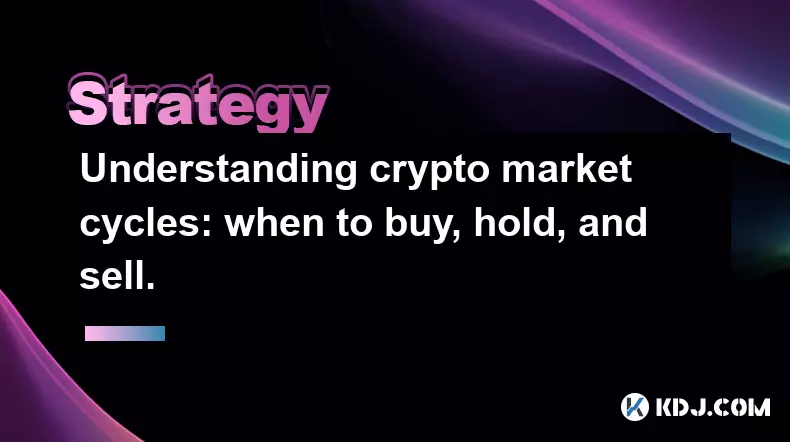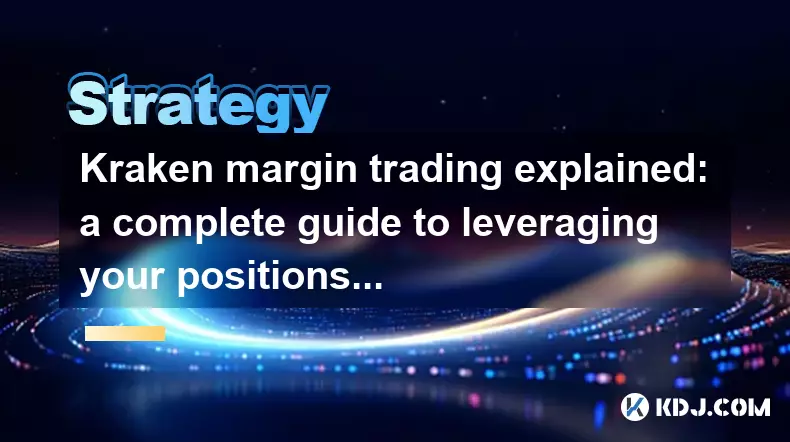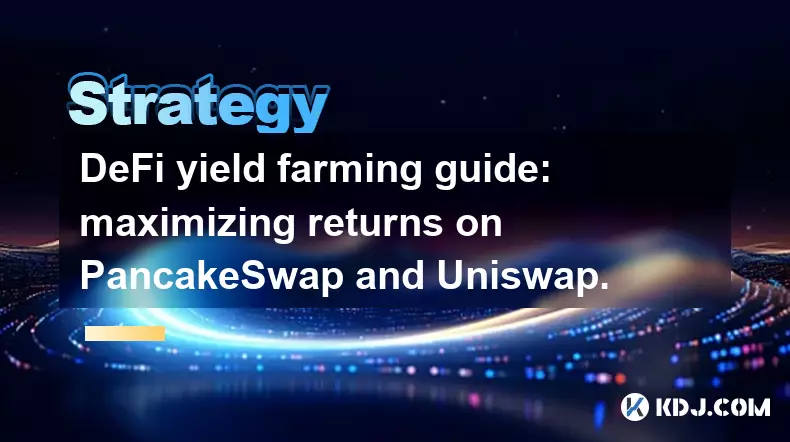-
 bitcoin
bitcoin $100977.009184 USD
-2.05% -
 ethereum
ethereum $3282.009150 USD
-3.23% -
 tether
tether $0.999813 USD
-0.02% -
 xrp
xrp $2.208254 USD
-4.89% -
 bnb
bnb $951.411089 USD
0.55% -
 solana
solana $155.761205 USD
-2.84% -
 usd-coin
usd-coin $1.000217 USD
0.02% -
 tron
tron $0.284475 USD
-1.28% -
 dogecoin
dogecoin $0.162363 USD
-1.53% -
 cardano
cardano $0.533988 USD
-0.47% -
 hyperliquid
hyperliquid $39.174339 USD
-3.22% -
 chainlink
chainlink $14.724828 USD
-1.16% -
 bitcoin-cash
bitcoin-cash $477.297986 USD
-1.28% -
 zcash
zcash $554.227426 USD
17.30% -
 ethena-usde
ethena-usde $0.998995 USD
-0.03%
Understanding crypto market cycles: when to buy, hold, and sell.
Crypto markets move in cycles of fear and greed—buying during extreme fear and holding through volatility has historically led to the greatest long-term gains.
Nov 02, 2025 at 11:19 am

Decoding the Rhythm of Crypto Market Cycles
1. The cryptocurrency market operates in recurring phases marked by predictable psychological and financial patterns. These cycles typically include accumulation, markup, distribution, and markdown stages. During the accumulation phase, prices remain low as institutional and experienced retail investors quietly build positions while public interest is minimal. This period often follows a prolonged bear market where sentiment is overwhelmingly negative.
2. As confidence returns and macroeconomic conditions improve, the market transitions into the markup phase. Early signs include increased trading volume, growing media attention, and rising on-chain activity. Projects with strong fundamentals begin outperforming speculative tokens, signaling a shift in investor behavior toward conviction-based buying rather than fear-driven exits.
3. The distribution phase emerges when valuations reach extreme levels and retail participation peaks. Social media buzz intensifies, with widespread narratives about “getting rich quick.” At this stage, smart money often begins exiting positions, taking profits before momentum stalls. On-chain data may show whales transferring large holdings to exchanges, a potential red flag for seasoned observers.
4. The markdown phase follows, characterized by declining prices, shrinking liquidity, and deteriorating sentiment. Leverage-heavy traders face liquidations, amplifying downward pressure. This period tests the resolve of long-term holders and separates speculative traders from strategic investors who understand the value of patience.
Strategic Entry Points: When to Buy
1. Identifying optimal buy zones requires analyzing both technical indicators and on-chain metrics. Key signals include historically low network valuation relative to active users, declining exchange reserves, and rising stablecoin deposits—indicating capital is being positioned for future deployment.
2. Dollar-cost averaging (DCA) proves effective during extended downtrends, allowing investors to accumulate assets without timing the exact bottom. This strategy reduces emotional decision-making and mitigates risk associated with volatility.
3. Monitoring funding rates and open interest on derivatives exchanges helps assess market positioning. Sustained periods of negative funding suggest excessive short leverage, which can precede sharp reversals due to short squeezes—a favorable environment for initiating long positions.
4. Buying during periods of extreme fear, as measured by the Crypto Fear & Greed Index dropping below 20, has historically yielded strong long-term returns. Such moments often coincide with capitulation events where weak hands exit the market, creating asymmetric risk-reward opportunities.
Holding Through Volatility: The Power of Conviction
1. Holding through volatile phases demands a clear investment thesis and resistance to social influence. Assets backed by real utility—such as decentralized finance protocols with consistent fee generation or Layer-1 blockchains with growing developer ecosystems—tend to withstand downturns better than meme-driven projects.
2. Regular portfolio audits help ensure alignment with original objectives. If fundamentals remain intact despite price declines, holding becomes a rational choice. Frequent reassessment prevents blind loyalty to underperforming assets lacking innovation or community support.
3. Staking and yield farming offer passive income streams that offset depreciation risks. However, participants must evaluate counterparty risk and impermanent loss exposure, especially in volatile markets where protocol incentives may change abruptly.
4. Long-term wealth creation in crypto often comes not from frequent trading but from enduring drawdowns while maintaining exposure to high-potential networks. Historical data shows that most gains occur within short windows; missing these due to premature selling erodes overall performance.
Selling Tactics: Securing Gains Without Regret
1. Setting predefined profit targets based on technical resistance levels or fundamental valuations prevents emotional decisions at peaks. Traders might use trailing stop orders to lock in profits while allowing room for upside continuation.
2. Taking partial profits at key milestones—such as all-time highs or major Fibonacci extensions—balances greed with prudence. Reallocating a portion of proceeds into stablecoins or undervalued sectors preserves capital for the next cycle.
3. Watching for on-chain exhaustion signals provides early warnings. Examples include rapid whale wallet turnover after large price increases or declining new address growth despite rising prices—both suggest weakening demand infrastructure.
4. Selling should align with personal financial goals rather than market euphoria; exiting when portfolio allocations exceed intended risk thresholds maintains discipline. Overexposure to any single asset class increases vulnerability to black swan events.
Frequently Asked Questions
What indicators signal the start of a new bull run?On-chain metrics like rising exchange inflows from dormant addresses, increasing hash rate for proof-of-work chains, and sustained growth in unique active addresses often precede major rallies. Additionally, rising institutional inflows into crypto ETFs and improved regulatory clarity contribute to sustainable upward momentum.
How do halving events impact market cycles?Bitcoin’s halving reduces block rewards by 50%, decreasing new supply entering the market. Historically, this event has preceded bull runs 6–18 months later as reduced selling pressure combines with steady or increasing demand. Similar dynamics apply to other scarce-supply cryptocurrencies with emission schedules.
Can stablecoins play a role in cycle navigation?Yes. Accumulating stablecoins during high-greed phases allows investors to preserve purchasing power. Deploying them during fear-dominated periods enables strategic entries. Stablecoins act as tactical dry powder, offering flexibility without exiting the ecosystem entirely.
Why do retail investors often lose money in bull markets?Retail participants frequently enter late, chasing momentum after significant gains have already occurred. They also tend to hold through corrections due to hope rather than analysis, eventually selling at a loss. Lack of defined strategies and susceptibility to hype amplify these behavioral pitfalls.
Disclaimer:info@kdj.com
The information provided is not trading advice. kdj.com does not assume any responsibility for any investments made based on the information provided in this article. Cryptocurrencies are highly volatile and it is highly recommended that you invest with caution after thorough research!
If you believe that the content used on this website infringes your copyright, please contact us immediately (info@kdj.com) and we will delete it promptly.
- BlockDAG, Avalanche, Dogecoin: Crypto's Leading Trio in 2025
- 2025-11-07 22:05:01
- Layer 2 Coins: Will There Be a Potential Explosion by 2026?
- 2025-11-07 16:50:02
- Filecoin, ICP, and the AI Infrastructure Renaissance: Is History Repeating?
- 2025-11-07 16:50:02
- Bitcoin's Wild Ride: Surges, Zeros, and the Search for Stability
- 2025-11-07 17:05:01
- XRP, Bitcoin, and the Rally: What's the Deal, New York?
- 2025-11-07 17:25:01
- Filecoin, DePIN, and a Technical Breakout: What's the Buzz?
- 2025-11-07 17:05:01
Related knowledge

Navigating a crypto bear market: strategies for survival and profit.
Nov 05,2025 at 02:04pm
Navigating a Crypto Bear Market: Strategies for Survival and Profit Surviving a crypto bear market requires more than just patience—it demands strateg...

Ethereum gas fees explained: how to save money on your transactions.
Nov 04,2025 at 04:01pm
Ethereum Gas Fees: Understanding the Basics1. Ethereum operates on a decentralized network where every transaction requires computational power to exe...

Kraken margin trading explained: a complete guide to leveraging your positions.
Nov 04,2025 at 02:19pm
Kraken Margin Trading Overview1. Kraken is one of the most established cryptocurrency exchanges offering margin trading to experienced traders seeking...

NFT flipping for beginners: a step-by-step guide to profitable trading.
Nov 02,2025 at 11:54pm
NFT Flipping Basics: Understanding the Market1. NFT flipping involves purchasing non-fungible tokens at a lower price and reselling them for profit, o...

DeFi yield farming guide: maximizing returns on PancakeSwap and Uniswap.
Nov 05,2025 at 12:20am
Understanding Yield Farming on PancakeSwap and Uniswap1. Yield farming has become a central activity in the decentralized finance (DeFi) space, allowi...

How to find the next 100x altcoin: a fundamental analysis checklist.
Nov 02,2025 at 09:54pm
Decentralized Exchanges Are Reshaping Trading Dynamics1. Decentralized exchanges (DEXs) have emerged as a powerful alternative to centralized platform...

Navigating a crypto bear market: strategies for survival and profit.
Nov 05,2025 at 02:04pm
Navigating a Crypto Bear Market: Strategies for Survival and Profit Surviving a crypto bear market requires more than just patience—it demands strateg...

Ethereum gas fees explained: how to save money on your transactions.
Nov 04,2025 at 04:01pm
Ethereum Gas Fees: Understanding the Basics1. Ethereum operates on a decentralized network where every transaction requires computational power to exe...

Kraken margin trading explained: a complete guide to leveraging your positions.
Nov 04,2025 at 02:19pm
Kraken Margin Trading Overview1. Kraken is one of the most established cryptocurrency exchanges offering margin trading to experienced traders seeking...

NFT flipping for beginners: a step-by-step guide to profitable trading.
Nov 02,2025 at 11:54pm
NFT Flipping Basics: Understanding the Market1. NFT flipping involves purchasing non-fungible tokens at a lower price and reselling them for profit, o...

DeFi yield farming guide: maximizing returns on PancakeSwap and Uniswap.
Nov 05,2025 at 12:20am
Understanding Yield Farming on PancakeSwap and Uniswap1. Yield farming has become a central activity in the decentralized finance (DeFi) space, allowi...

How to find the next 100x altcoin: a fundamental analysis checklist.
Nov 02,2025 at 09:54pm
Decentralized Exchanges Are Reshaping Trading Dynamics1. Decentralized exchanges (DEXs) have emerged as a powerful alternative to centralized platform...
See all articles





















![The Graph Price Prediction [GRT Crypto Price News Today] The Graph Price Prediction [GRT Crypto Price News Today]](/uploads/2025/11/07/cryptocurrencies-news/videos/690d4df44fe69_image_500_375.webp)




















































